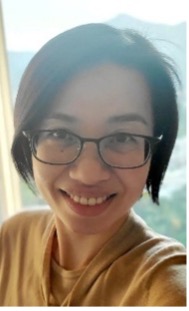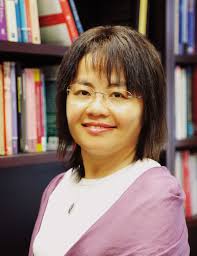CHILDES Mandarin-Cantonese-English EACMC Corpus

|
Ziyin Mai
Department of Linguistics and Modern Languages
Chinese University of Hong Kong
maggiezymai@cuhk.edu.hk
website
|

|
Yuqing Liang
Deaprtment of Linguistics and Translation
City University of Hong Kong
yuqiliang7-c@my.cityu.edu.hk
|

|
Zhuang Wu
Faculty of English Language and Culture
Guangdong University of Foreign Studies
woodblcu@gdufs.edu.cn
|

|
Virginia Yip
Linguistics and Modern Languages
Chinese University of Hong Kong
vcymatthews@cuhk.edu.hk
|
| Participants: | 61 |
| Type of Study: | longitudinal, naturalistic |
| Location: | Hong Kong |
| Media type: | audio |
| DOI: | doi:10.21415/JEFY-9F39 |
Mai, Z. & Yip, V. (2022). Caretaker input and trilingual development
of Mandarin, Cantonese and English in early childhood (1;6-2;11).
International Journal of Bilingual Education and Bilingualism. 25:9,
3389-3403.
Mai, Z., Liang, Y., Wu, Z., & Yip, V. (2025) Trilingual toddlers
strategically draw on closely-related languages to catch up. Paper
presented at the 15th International Symposium on Bilingualism (ISB15),
June 9-13, Donostia-San Sebastián, Spain.
In accordance with TalkBank rules, any use of data from this corpus
must be accompanied by at least one of the above references.
Project Description
The Early Additive Child Multilingual Corpus (EACMC) is a result of a
series of linked research projects led by Ziyin Mai at the Childhood
Bilingualism Research Centre at the Chinese University of Hong Kong
since 2016. An overarching objective of the projects is to examine
multilingual input and early language development in toddlers raised in
multilingual communities (e.g., Hong Kong, Guangzhou) in the Greater Bay
Area (GBA) in southern China. In this part of China, young children are
speakers of Cantonese, Mandarin and English to different extents,
ranging from near-monolinguals and functional bilinguals to highly
proficient trilinguals. Many of them receive Chinese input from
(grand)parents who speak Cantonese or Mandarin as their first and
dominant language, and also English input from parents or live-in
foreign domestic helpers who speak English as an additional and usually
weaker language. With the increasingly popular practice of introducing
English to young children through daily interactions at home, additive
bilingualism or trilingualism is becoming the goal and the norm.
The projects aim to document and analyze the developmental
trajectories of bilingual and trilingual children learning Cantonese,
Mandarin and/or English through interacting with parents and other
caretakers at home before age 3, with matched monolinguals for
comparison. So far, the project has been conducted in four phases and is
still expanding. We will release the data from Phases 1 and 2 in this
first installment.
Phase 1 features two longitudinal studies tracking the trilingual
development of two brothers in Hong Kong:
Leo: The Leo Corpus documents the simultaneous development of
Mandarin, Cantonese and English in a Hong Kong child from 1;6-2;11. Leo
was born and raised in Hong Kong. His parents are native speakers of
Mandarin (and Cantonese is also his mother’s native language), and
second language speakers of English. Before 1;1, the family adopted the
“one parent-one language” practice, where the father and paternal
grandmother addressed the child in Mandarin, and the mother addressed
him in Cantonese consistently. From 1;1 to 3;4, the family introduced an
innovative “one day-one language” system on top of the “one parent-one
language” system, in which the father and the grandmother continued to
speak Mandarin to the child, whereas the mother began to interact with
the child in English every other day in a week and Cantonese the rest of
the days. Leo also had exposure to the three languages through attending
playgroups and nursery schools. The parents and research assistants
began to video-tape their interactions with Leo on a weekly basis at
0;6. The current corpus contains monthly audio recordings and
corresponding transcripts in three languages for 18 months from 1;6 to
2;11 (54 files, 27 hours in total), featuring Leo interacting with his
main providers of input in the three languages: Mandarin from father and
grandmother, Cantonese from mother, and English from mother, domestic
helper and school teachers who are native speakers of English
(represented by an American research assistant in the recordings).
Louis: Louis is three years younger than Leo. He was raised in a
similar trilingual input model, hearing Mandarin from his father and
grandmother, English from his mother, brother and domestic helper, and
Cantonese from his mother. His trilingual development in Cantonese,
Mandarin and English from 2;0 to 2;11 was documented through monthly
15-minute video recordings of dyadic adult-child interactions at home,
featuring all primary input providers (mother, father, grandmother,
foreign domestic helper, brother) in each language routinely used
between the adult and Louis. The current corpus includes 58 recordings
in total (12 with Cantonese as the intended language of interaction, and
23 with Mandarin or English as the intended language of interaction).
Phase 2 studies the relation between input and developmental outcomes
among 59 Cantonese monolingual (n = 21), Cantonese-English bilingual (n
= 31) and Cantonese-Mandarin-English trilingual (n = 7) children at 3;0.
The study was carried out during the Covid-19 pandemic. All participants
were ethnically Chinese, born and raised in Hong Kong, and had no
suspected or known language or neurobiological disorders based on
parental report. The bilingual and trilingual children typically
received Chinese input (Cantonese and/or Mandarin) from (near)native
speakers and English input from non-English-dominant speakers with
varying proficiency. The bilingual and the monolingual group do not
differ in terms of maternal education or family income. Caretaker-child
dyads were invited to participate in a 10-minute standard kitchen toy
play task at home at 3;0 or 3;1 using their routine language(s). The
dyadic play was recorded remotely via ZOOM by a research assistant. The
current corpus includes a total of 104 transcripts of the recordings in
three languages. For potential collaborations in analyzing the audio and
video data, please contact Ziyin Mai.
All recordings were manually transcribed and cross-checked for
accuracy by trained research assistants and students, and in the cases
of Leo and Louis, double-checked by the mother.
Acknowledgements
We would like to express our gratitude to Brian MacWhinney, Director
of CHILDES for his expertise, advice and technical support. We thank all
the children and their caretakers for contributing valuable data.
The following students and assistants have made important
contributions in collecting, transcribing and processing the data: Zishu
Yu, Yuqi Wu, Hannah Lam, Jieyu Zhou, Vaness Tsz Yan Law, Shiyu He,
Qiuyun Cai, Ashley Chan, Jingyao Liu, Xuening Zhang, Katherine Chang,
Yingyu Su, Jiaqi Nie, Le’an Luo, Huilin Li, Lu Zhao, Lu Zou, Zhiyin Yu,
Yuchen Zhao, Mulin Cao, Yuxi Wu, Suihua Zhan, Jinyan Zeng, Huihong
Huang, Junlin Zhu, Ashlyn Tsz Ching Chan, Yue Cao, Yue Chen, Ranee
Cheng, Kelly Mak, Yuki Wong, Eunice Wong, Amanda Tang, Esther Tsz Ki
Chau, Ka Hin Ng, Jing Huang, Jiayu Chen, Shuying Chen, Sze Wing Li, Peng
Ye, Wenjing Tian, Yi Gu, Mingwei Liang, Elena Vermeer.
We are grateful for the following colleagues and collaborators, who
have provided kind advice and practical support for these projects over
the years: Stephen Matthews, Kay Wong, Vanessa Pang, Jiangling Zhou,
Lydia Catedral, Cecilia Chan, Peggy Mok, Regine Lai, Patrick Wong.
The research was supported by the General Research Fund from the Hong
Kong Research Grants Council (“Input and experience in early trilingual
development”, Project no. 14615820; Input and caretaker proficiency in
early bilingual development: mothers, helpers and toddlers, Project no.
21604522), and several internal research grants from Guangdong
University of Foreign Studies, City University of Hong Kong, and the
Chinese University of Hong Kong.



